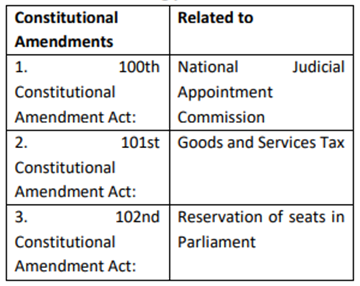Question
The question given below consists of two statements
numbered I and II below them. You have to decide whether the data provided in the statements are sufficient to answer the question. Read all the statements and give answer: Five persons A, B, C, D and E have different heights. Who among the following is third tallest? Statement I: D is taller than A and shorter than B. B is shorter than C. Statement II: C is not the tallest but taller than D.Solution
From statement I alone, only the order of B, D, C, A can be determined (C > B > D > A, in descending order of their height) From statement II alone, only C is not the tallest can be determined. Using both statement I and II, E is tallest and thus, B is the third tallest person. So, the order is E > C > B > D > A. The data given in both statements I and II together is sufficient to answer the question.
In a division sum, the divisor is 9 times the quotient and also 3 times of the remainder. If the remainder is 45, then the dividend is:
Which of the following is most commonly used in fluorescent lamp?
Sharada Peeth is located in which of the following states?
Which of the following statements about systemically important banks is correct?
I. List of global systemica...
Consider the following pairs:

Which of the above pairs...
Which one of the following pairs does not belong to the same category?
According to 2011 census, what is the annual exponential growth rate in India?
Wages paid for installation of machinery is debited to which one of the following accounts?
Consider the following statements: According to Census 2001
1. The literacy rate increase for males is more than that of the females during la...
Consider the following statements in regards to wind energy:
1. The Ministry of New and Renewable Energy celebrated Global Wind Day in New Del...
Relevant for Exams:


